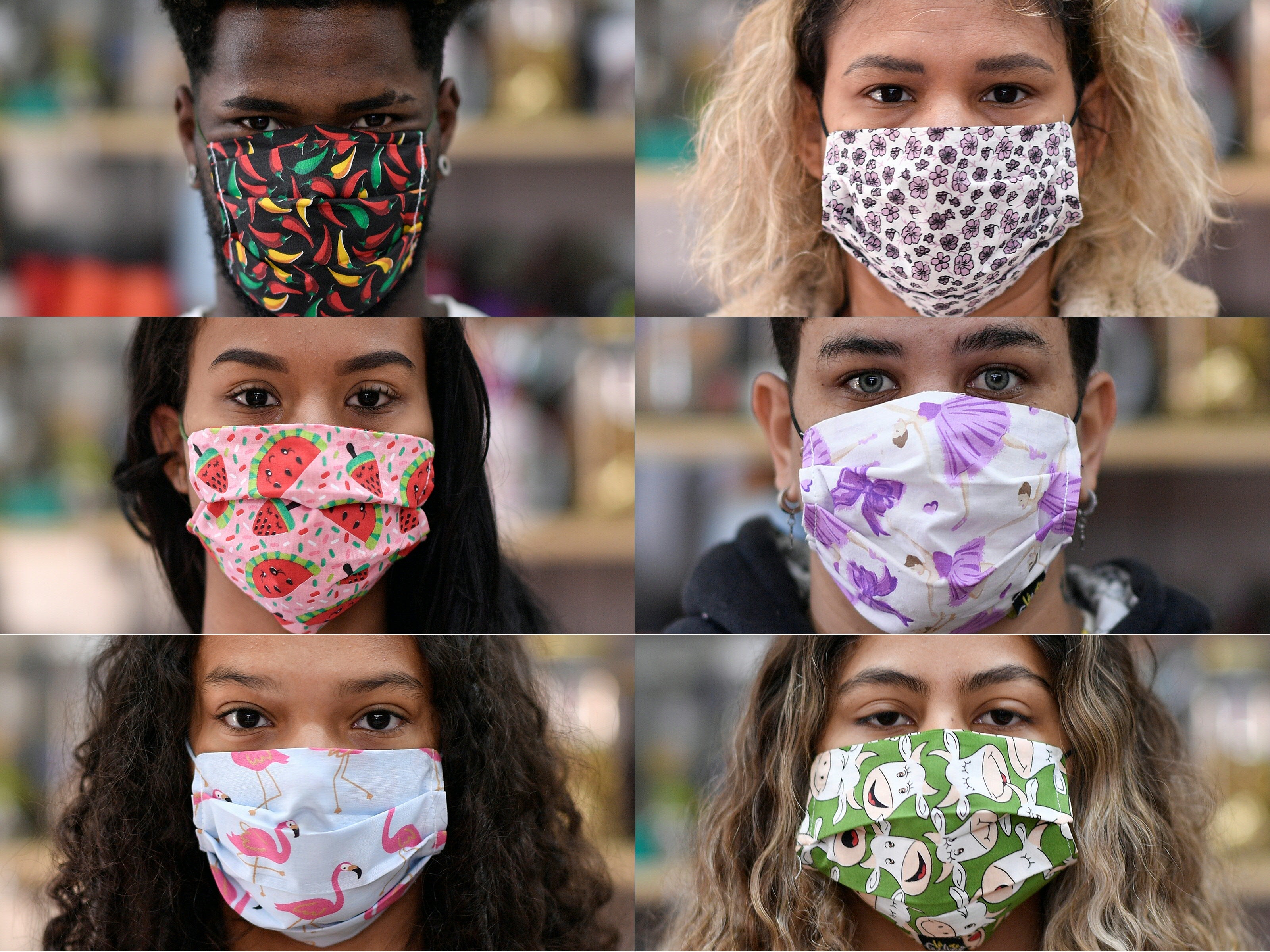A body language expert’s guide to facial expressions behind a mask
‘Humans have always depended on facial expression as a way of social and workplace communication’

Your support helps us to tell the story
From reproductive rights to climate change to Big Tech, The Independent is on the ground when the story is developing. Whether it's investigating the financials of Elon Musk's pro-Trump PAC or producing our latest documentary, 'The A Word', which shines a light on the American women fighting for reproductive rights, we know how important it is to parse out the facts from the messaging.
At such a critical moment in US history, we need reporters on the ground. Your donation allows us to keep sending journalists to speak to both sides of the story.
The Independent is trusted by Americans across the entire political spectrum. And unlike many other quality news outlets, we choose not to lock Americans out of our reporting and analysis with paywalls. We believe quality journalism should be available to everyone, paid for by those who can afford it.
Your support makes all the difference.A body language expert has produced a guide to reading people’s facial expressions – when they are hidden behind a mask.
Research found that 76 per cent of us struggle to read others when they are wearing a face covering, with more than half mistaking their expressions completely.
Body language expert and TV personality Judi James has revealed her top tips – and not surprisingly, it is all in the eyes.
She indicates a genuine-looking, eye-smile should involve some wrinkling at the corners and the rounding of the cheeks.
An “eye-flash”, where the eyes narrow in the eye-smile but the brows pop up and down again in one rapid movement, can signify someone is flirting and “likes what they see”.
A rounding of the eye suggests shared excitement, while those truly “head over heels” will have dilated pupils, giving true meaning to the “look of love”.
But not all eye-signs are indicators of happy feelings – as James points out, there are tell-tale signs of someone feeling disgusted or angry.
To recognise disgust on the face of someone wearing a mask, you should look out for a puckered frown, narrowed eye shape, and a wrinkling of the skin at the bridge of the nose.
Anger is typically displayed with knitted brows that come as low as possible over the eyelids, accompanied by a hard stare with the eyes slightly rounded – and the head tilted slightly forward.
Speaking on behalf of Vision Direct, which commissioned the study of 2,000 adults and the research into eye expressions, Judi James said: “The human animal has always depended on facial expression as a way of social and workplace communication and over the years the key focus has been the mouth.
“We have come to depend on this widening of the lips as a rapport-building social shorthand, which is why the wearing of face masks has caused worries in terms of closing down our ability to communicate.”
The study’s findings show more than two-thirds of adults struggle to see how someone is feeling when they have a mask on.
In particular, 55 per cent have mistaken someone’s expression, with seven in 10 now trying harder to study and read someone’s eyes to guess what face they are making behind the mask.
It also emerged that 71 per cent, of those polled via OnePoll, agreed the eyes are a key indicator of an expression – if only they knew how to read them.
SWNS



Join our commenting forum
Join thought-provoking conversations, follow other Independent readers and see their replies
Comments